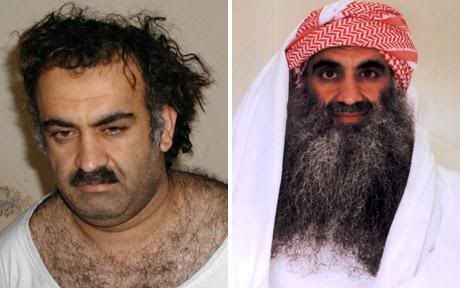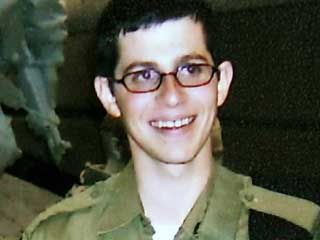But direct attacks on our military by outside forces or subversion by members of the military themselves is more common then what you would think.
In fact many terrorists are ex-military; al Qaeda openly encourages the conversion of specially skilled Westerners, especially those with military or scientific training.
Here are some examples of the how intimately linked terrorism and the military are...
Seifullah Chapman, (left) former marine and convert to Islam, later went on to join the North Virginia  Paintball Network. This cell, broken up in 2003, trained to launch attack against America.
Paintball Network. This cell, broken up in 2003, trained to launch attack against America.
Hervey Luwazo, aka Jamal, was a French soldier who converted while serving in the military. He later traveled to Afghanistan to train in the camps and fight against the Americans where he was found frozen to death in the mountains in 2001.
 Daniel Patrick Boyd, was raised in a military family but converted to Islam at 17 when his parents divorced and his mother remarried a Muslim American lawyer. Boyd later went on to lead a North Carolina cell that plotted to launch attack overseas. Boyd and his two sons were arrested by the FBI in 2009.
Daniel Patrick Boyd, was raised in a military family but converted to Islam at 17 when his parents divorced and his mother remarried a Muslim American lawyer. Boyd later went on to lead a North Carolina cell that plotted to launch attack overseas. Boyd and his two sons were arrested by the FBI in 2009.
The Commando Dixon Network, whose members were intimately linked with those of the Madrid train bombings, planned to launch chemical attacks against the U.S. Navy in Spain. The plot was disrupted in 2004.
 Egyptian-American James Elshafay tried to join the U.S. Army but was rejected because he was found to be “emotionally disturbed” and “delusional.” Elshafay, who was later diagnosed as a schizophrenic, went on the plan the foiled 2004 New York, Herald Square Subway plot with Shahawar Siraj.
Egyptian-American James Elshafay tried to join the U.S. Army but was rejected because he was found to be “emotionally disturbed” and “delusional.” Elshafay, who was later diagnosed as a schizophrenic, went on the plan the foiled 2004 New York, Herald Square Subway plot with Shahawar Siraj.
 David Matthew Hicks, aka Muhammed Dawood, was rejected by the Australian army, before he became the “Australian Taliban,” captured in Afghanistan in early 2002. Hicks dropped his Islamic faith while imprisoned in Guantanamo Bay, Cuba, becoming an “informant” for the U.S. troops. Hicks later plead to a lesser offense and was transferred to Australia in 2007 where he was released. He remains free (in Australia) to this day.
David Matthew Hicks, aka Muhammed Dawood, was rejected by the Australian army, before he became the “Australian Taliban,” captured in Afghanistan in early 2002. Hicks dropped his Islamic faith while imprisoned in Guantanamo Bay, Cuba, becoming an “informant” for the U.S. troops. Hicks later plead to a lesser offense and was transferred to Australia in 2007 where he was released. He remains free (in Australia) to this day.
In 2007, Kuwaiti born high school teacher Tahmeed Ahmad, who was on the
 German convert to Islam Fritz Gelowicz, aka “Abdullah” plotted with his convert-turned-terrorist cohort Daniel Schneider to attack U.S. bases in Germany. Gelowicz went as far as attempting to provoke U.S. soldiers stationed at the German bases to fight with him by slashing the tires of their military vehicles while they were parked on German streets. The failed terrorists, known as the Sauerland Cell, were picked up by authorities in 2007 during Operation Alberich.
German convert to Islam Fritz Gelowicz, aka “Abdullah” plotted with his convert-turned-terrorist cohort Daniel Schneider to attack U.S. bases in Germany. Gelowicz went as far as attempting to provoke U.S. soldiers stationed at the German bases to fight with him by slashing the tires of their military vehicles while they were parked on German streets. The failed terrorists, known as the Sauerland Cell, were picked up by authorities in 2007 during Operation Alberich.
Ryan G. Anderson aka Amir Abdul Rashid, was an all American Lutheran from Washington  State who loved guns and God. He attended Washington State University where he studied Middle Eastern History. He converted to Islam in 1999 and after graduating in 2002, he joined the National Guard and was about to be deployed to Iraq when he was arrested by the FBI for espionage. Anderson had attempted to pass on information about the military to Islamists he met online).
State who loved guns and God. He attended Washington State University where he studied Middle Eastern History. He converted to Islam in 1999 and after graduating in 2002, he joined the National Guard and was about to be deployed to Iraq when he was arrested by the FBI for espionage. Anderson had attempted to pass on information about the military to Islamists he met online).
 The Birmingham beheading plot, inspired by radical British cleric (and Jamaican born Muslim convert) Abu Izzadeen, was hatched (and halted) in 2007. A group of six Muslims schemed to behead a Muslim soldier by luring him with drugs and drink while on leave from the base in hopes of lowering morale and preventing British Muslims from enlisting.
The Birmingham beheading plot, inspired by radical British cleric (and Jamaican born Muslim convert) Abu Izzadeen, was hatched (and halted) in 2007. A group of six Muslims schemed to behead a Muslim soldier by luring him with drugs and drink while on leave from the base in hopes of lowering morale and preventing British Muslims from enlisting.
 Beltway Sniper John Allen Williams, aka John Allen Muhammed converted to the NOI in the 1980s but later turned to more traditional Islamic practices. He joined the army where he was court-martialed but later honorably discharged.
Beltway Sniper John Allen Williams, aka John Allen Muhammed converted to the NOI in the 1980s but later turned to more traditional Islamic practices. He joined the army where he was court-martialed but later honorably discharged.
Lionel Dumont was an “aimless” Frenchman who converted to Islam in 1991. He served in the  French army then went to fight alongside the Muslims in Bosnia. He was indicted in a plot to bomb the G7 in 1996 (with a radical Muslim group called the “Roubaix Gang” that stole cars to fund their operations). He lived as a fugitive, traveling with numerous fraudulent passports, while raising and laundering money for terrorist across Europe and Asia before his arrest.
French army then went to fight alongside the Muslims in Bosnia. He was indicted in a plot to bomb the G7 in 1996 (with a radical Muslim group called the “Roubaix Gang” that stole cars to fund their operations). He lived as a fugitive, traveling with numerous fraudulent passports, while raising and laundering money for terrorist across Europe and Asia before his arrest.
 Mark Fidel Kools was a Los Angeles born African American who accepted Islam (and changed his name to Hasan Karim Akbar) after his mother’s conversion. He went on to earn degrees in aeronautical and mechanical engineering and later joined the U.S. Army. In 2003, as a Sergeant stationed in Kuwait, he killed (“fragged”) two soldiers and wounded fourteen others in a gun/grenade attack on his own camp (in his diary he wrote that he had “changed sides”).
Mark Fidel Kools was a Los Angeles born African American who accepted Islam (and changed his name to Hasan Karim Akbar) after his mother’s conversion. He went on to earn degrees in aeronautical and mechanical engineering and later joined the U.S. Army. In 2003, as a Sergeant stationed in Kuwait, he killed (“fragged”) two soldiers and wounded fourteen others in a gun/grenade attack on his own camp (in his diary he wrote that he had “changed sides”).
 Bryant Neal Vinas, aka Bashir el Ameriki, was born and raised Catholic in New York to Latin American immigrants but his parents divorce left him devastated and he dropped out of college to join the military where he was discharged after just three weeks. He was arrested in Pakistan in 2008 and admitted to the FBI that he had passed along information about and had planned to launch a suicide attack against the Long Island Railroad Road.
Bryant Neal Vinas, aka Bashir el Ameriki, was born and raised Catholic in New York to Latin American immigrants but his parents divorce left him devastated and he dropped out of college to join the military where he was discharged after just three weeks. He was arrested in Pakistan in 2008 and admitted to the FBI that he had passed along information about and had planned to launch a suicide attack against the Long Island Railroad Road.
Willie Virgile Brigitte, aka Mohamed Ibrahim Abderrahmane, was born a Christian in  Guadalupe (French territory) and later joined the French Navy, but soon returned to civilian life after being cited for two desertions. In the late 1990s he fully embraced Islam. Studying in Yemen and training in Pakistan he traveled between Paris and Australia, but was arrested by authorities and returned to France after he was accused of planning terrorist attacks. Prior to his arrest he helped obtain forged passports for the assassins of Afghanistan’s Northern Alliance, Ahmed Shah Massoud.
Guadalupe (French territory) and later joined the French Navy, but soon returned to civilian life after being cited for two desertions. In the late 1990s he fully embraced Islam. Studying in Yemen and training in Pakistan he traveled between Paris and Australia, but was arrested by authorities and returned to France after he was accused of planning terrorist attacks. Prior to his arrest he helped obtain forged passports for the assassins of Afghanistan’s Northern Alliance, Ahmed Shah Massoud.
 The Fort Dix Six were a groups of twenty-something year old guys (three of them well known rabble rousing brothers) who planned to use a pizza delivery as a disguise to get into and attack New Jersey’s Fort Dix in hopes of killing as many soldiers as possible.
The Fort Dix Six were a groups of twenty-something year old guys (three of them well known rabble rousing brothers) who planned to use a pizza delivery as a disguise to get into and attack New Jersey’s Fort Dix in hopes of killing as many soldiers as possible.



















































